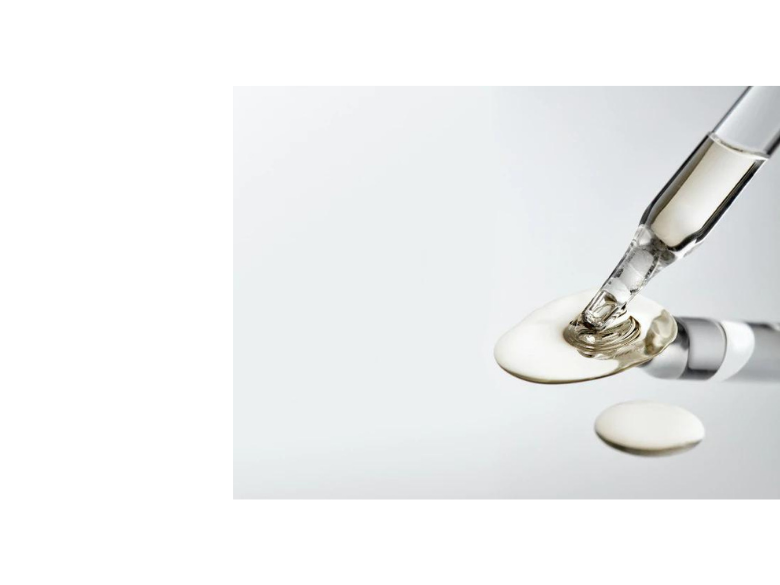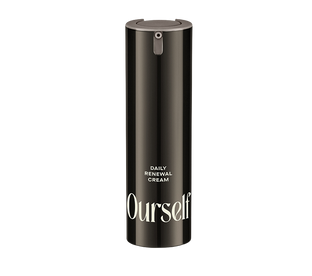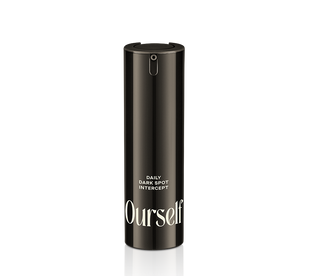
When it comes to aging, a clear, even skin tone is the holy grail. Let the crusade begin.
Wrinkles may be a badge of honor, but hyperpigmentation is more like a battle scar. When it comes to aging, sporting an even skin tone may help you appear far younger than the occasional fine line: a landmark 2006 study found that “skin tone homogeneity” (a fancy term for an exceptionally clear complexion) was the ultimate totem when it came to markers of youth.
"Whether a woman is 17 or 70, the contrast of skin tone plays a significant role in the way her age, beauty and health is perceived," said study co-author Dr. Bernhard Fink, Senior Scientist in the Department for Sociobiology/Anthropology at the University of Goettingen, Germany. "Skin tone homogeneity can give visual clues about a person's health and reproductive capability, so an even skin tone is considered most desirable. In this study, we found cumulative UV damage influences skin tone dramatically, giving women yet another reason to prevent UV-related skin damage or try to correct past damage that is causing uneven skin tone."
Despite their somewhat dated pronoun issue (just “women”?), this study remains a benchmark today: “It’s 100 percent spot on,” says Maryland-based, Lady Derm Docs dermatologist Eva Simmons-O'Brien, M.D., F.A.A.D. “This is something that I say daily to my patients. Filler, Botox, lasers, etc. are the sprinkles and cherries on the ‘sundae.’ The foundation, or ‘ice cream,’ will always be good skincare habits and products. The quality of our skin often determines how successful all the other ‘stuff’ will be.”
In other words, without even skin tone, that “sundae” isn’t going to be so delicious. Think about it: Even the best makeup artist in the world can’t create a stunning lewk if the subject’s complexion doesn’t look flawless to begin with.
How Hyperpigmentation Works
While there are plenty of issues that can potentially mar an otherwise even complexion, hyperpigmentation—generally caused by sun damage—tends to be the main culprit. The most common types of dark spots are melasma, sunspots, and post-inflammatory hyperpigmentation (think: acne scars). While sunspots—also referred to as the quite off-putting “liver spots”—are obviously products of sun exposure, melasma is a little more insidious, and can occur due to hormonal changes, like being on birth control pills or during pregnancy. But the gist is this: Any factor that causes an increase in melanin production can result in that tell-tale discoloration. “Out, damned spot!” we say.
How to Fix Hyperpigmentation
So what’s a she, him, or they to do? “Treating hyperpigmentation takes a village!” says Simmons-O’Brien. “Primarily because the origin can be multifaceted.”
In the past, the ingredient hydroquinone, available in both prescription and over-the-counter forms, was frequently used to target dark spots. You may have heard of it as part of that group of super sketchy “whitening” products that any dignified derm will currently tell you to avoid at all costs. Here are the problems with the old-fashioned way: Prolonged use can actually cause darkening (known in the scientific world as “ochronosis”). In fact, hydroquinone has long been banned in Europe due to its toxic effect on melanin-blocking cells. While it is still used today, it should only be administered under a dermatologist’s strict supervision.
Ablative lasers are a more modern approach (one brand name, Fraxel Clear and Brilliant, has been clinically shown to improve skin tone and texture), however, what’s not so modern is that many of these lasers are not suited to anyone with darker skin tones. In fact, according to Dermcollective, those with skin tones registering five or six on the Fitzpatrick scale should avoid laser treatment for hyperpigmentation altogether. Someone must’ve missed the inclusivity memo.
Chemical peels contain strong acids (like glycolics and alpha hydroxys) to help even one’s complexion, however they also aren’t always ideal for darker skin tones, and can also cause irritation for any sensitive skin types. Try Ourself Brightening Peel, which is clinically-proven and formulated to work for all skin tones, and contains highly concentrated 34% glycolic acid.
How to Prevent Hyperpigmentation in the First Place
The most standard way to derail that excessive melanin production is to completely avoid the sun, which, unless you are a creature of the night, is a little easier said than done. That said, wearing sunscreen (and reapplying it religiously), is key, says Simmons-O’Brien: “Sunblocks, or, micronized zinc formulas, are better for non-UV irradiation or blue light, [which results from exposure to] computers, cell phones, television screens, and indoor lighting. Sun protection is also necessary to protect against pollution which can adversely affect the skin.” (Try Ourself Mineral Sunscreen Broad Spectrum SPF 50, which protects against UVA, UVB, and blue light rays.)
Simmons-O’Brien also says individuals can help prevent hyperpigmentation by taking an oral antioxidant called polypodium leucotomos, an Amazonian fern that works internally as a scavenger for oxygenated free radicals. (Heliocare and Isdin are two brand names.)
Finally, while retinol can help with even skin tone, look to scientifically-proven preventative ingredients. “Topical antioxidants like niacinamide, vitamin C, brown algae, cysteamine, tranexamic acid, and glutathione, can slow down melanin production—or block specific types of melanin—as well as suppress inflammation and vasodilation, all of which can play into hyperpigmentation,” says Simmons-O’Brien. Get cozy with Ourself Daily Dark Spot Intercept, which contains niacinamide, vitamin C, and Intides™—intelligent peptides—and works to defend against the formation of new spots and reduce the appearance of uneven pigmentation and redness.
In the immortal words of Dr. Simmons-O’Brien, it really does take a village. For consistent treatment and prevention, try the Ourself All Over Brightening Duo, which includes the Daily Dark Spot Intercept to defend against the formation of new spots, and Ourself Brightening Peel with 34% glycolic acid to reduce the appearance of lines and wrinkles and pores. These products work in tandem to treat and defeat uneven pigmentation and reveal a brighter, and yes, more even skintone.
The takeaway? When it comes to dark spots, you’re more in control than you think, and you’ve got options. But stressing about a fine line here or there? Just keep calm and totally carry on. You look amazing.




